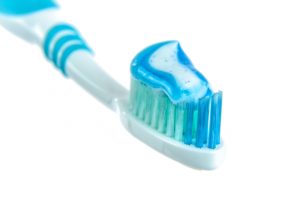When Should I Change My Toothbrush?
June 21, 2021
 Your teeth can last for a lifetime with the right care over the years. Your toothbrush is your smile’s first line of defense against cavity-causing bacteria that can threaten the longevity of your teeth. The American Dental Association recommends brushing your teeth at least twice daily for 2 minutes each session, which means your toothbrush is going to get a lot of use. Eventually, it’s going to need to be replaced, but when? Here’s the information you need to change your toothbrush on time to safeguard your smile.
Your teeth can last for a lifetime with the right care over the years. Your toothbrush is your smile’s first line of defense against cavity-causing bacteria that can threaten the longevity of your teeth. The American Dental Association recommends brushing your teeth at least twice daily for 2 minutes each session, which means your toothbrush is going to get a lot of use. Eventually, it’s going to need to be replaced, but when? Here’s the information you need to change your toothbrush on time to safeguard your smile.
Change Your Toothbrush Regularly
Your toothbrush is an effective solution to remove harmful food particles, plaque, and bacteria from your teeth and tongue. Brushing for 2 full minutes in the morning and at night using the appropriate methods can prevent tooth decay, bad breath, and other oral health concerns. If your toothbrush is frayed or has bacteria buildup, your brushing routine won’t be effective. Your dentist in Midland recommends changing your toothbrush at least every 3 months. You’ll want to buy a new one sooner if the bristles are damaged or after you’ve been ill.
Choosing the Best Toothbrush
With your toothbrush the most important tool you have at home to support your dental health, you don’t want to choose just any product. Believe it or not, all toothbrushes aren’t considered equal. Here are a few things to consider when selecting a new one:
- Manual Vs. Electric: When used correctly, both manual and electric toothbrushes are efficient. Many people prefer an electric model because they offer more brush strokes per minute for a better clean. They also have special features, like a timer or pressure sensor, to make your oral hygiene routine more effective.
- ADA’s Seal of Acceptance: Only use dental products that have earned the American Dental Association’s Seal of Acceptance. This means they’ve undergone voluntary testing to ensure they are safe and effective.
- Soft Bristles: Your dentist recommends using soft bristles to prevent damage to your enamel or gums.
- Brush Head: Brush heads come in many shapes and sizes. It’s best to choose one that accommodates the size of your mouth. If you want an electric toothbrush, consider the cost of replacing the brush heads.
- Handle: Pick a toothbrush that has a comfortable handle to make it easier to brush your teeth, including those hard-to-reach areas, like behind your incisors.
Maintain a Healthy Smile
Besides brushing twice daily, don’t forget to floss every night before going to bed. Although brushing is the most effective way to clean your teeth, you can’t reach everywhere in your mouth, like between your teeth. Use high-quality dental floss to remove plaque buildup left behind by your toothbrush to keep your gums healthy.
About Dr. Laura Philipps
Dr. Philipps has over 2 decades of experience in dentistry. She earned her dental degree at Tufts University before continuing her training at the Pankey Institute, KOIS Center, and Spear Education. She focuses on prevention to help her patients reach and maintain optimal oral health. If it’s time for your next cleaning and checkup, contact our office today to schedule an appointment.
No Comments
No comments yet.
RSS feed for comments on this post.
Sorry, the comment form is closed at this time.
